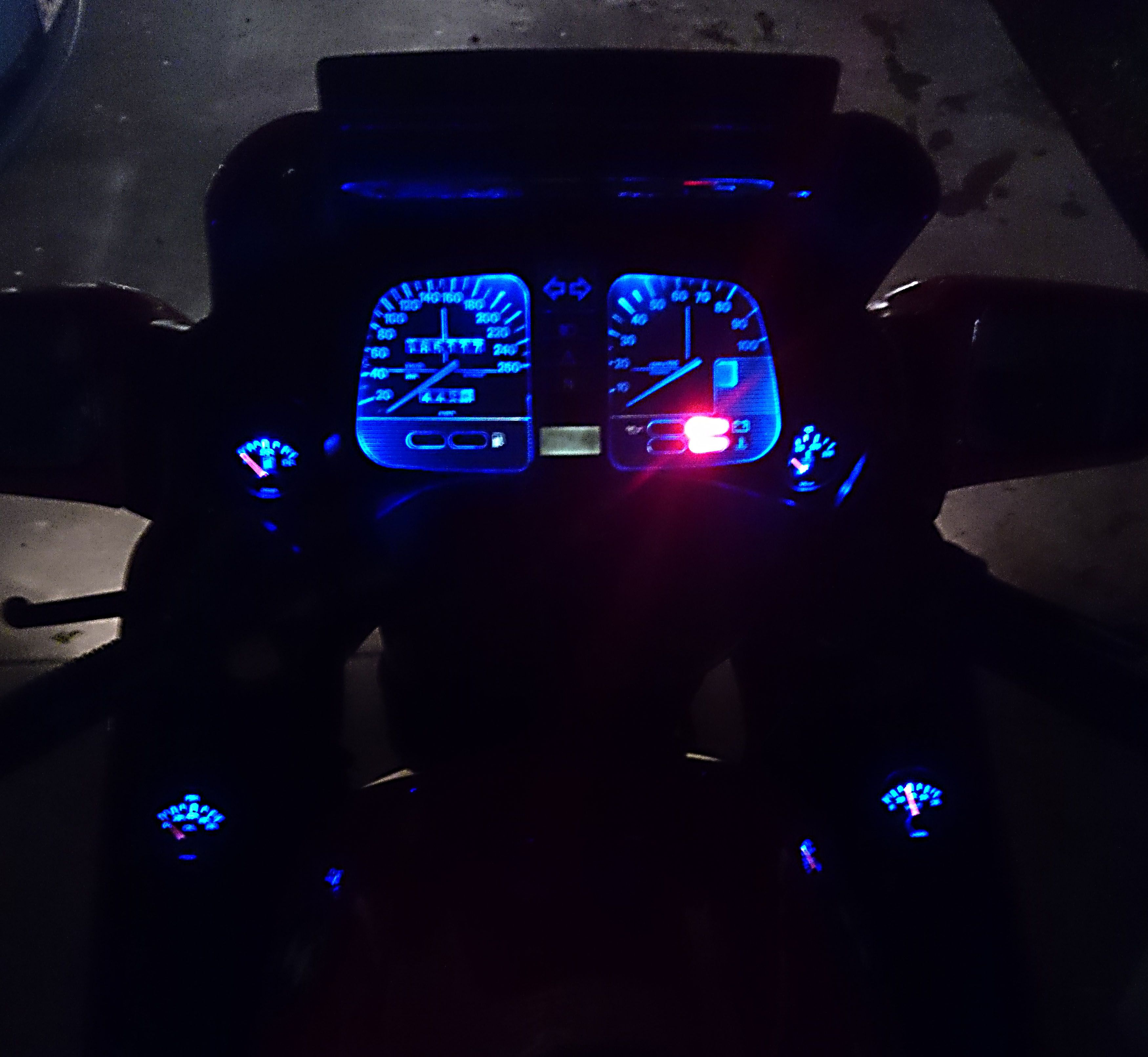robmack great read. a bit beyond my ability can i buy a new sender unit? and install it ofr a fix wrote:I had a chance to look at my failing fuel level sender today and discovered information that would be useful for the community.
How does it work:The sender has a movable arm ending in a float that raises and lowers according to the fuel level. The arm articulates a pair of metal wipers over two circuit cards. The assembly is housed in a metal box welded to a bracket that mounts to the bottom of the tank. The wiring goes through a liquid-tight connector assembly.
 Fuel Level Sensing:
Fuel Level Sensing:The upper wiper sweeps across a 130 ohm wire wound resistor plate, one end of which is connected to the liquid-tight connector and the other end is not connected to anything. The lower wiper sweeps across another plate containing two circular contacts, one of which is wired to the liquid-tight connector, the other is not connected at all. The upper wiper outputs a resistance value between 2 and 130 ohms, proportional to the position of the wiper.
When the tank is full of fuel, the float is in its highest position and the resistance measured should be around 2 ohms. When the tank is nearly empty, the float is at its lowest position and the resistance measured should be around 130 ohms.
To test the resistive wire, use a multimeter with resistance measuring capability. As in the photo set below, when measuring between the connector and the left side of the resistor, the value should be around 130 ohms.


When measuring between the connector and right side of the resistor, the value should be around 2 ohms.

 Reserve level Sensing:
Reserve level Sensing:The lower wiper outputs a binary signal -- open circuit or grounded -- that communicates the reserve volume to the low fuel light on the instrument cluster. Normally, when the tank is full of fuel, the circuit is open. When the arm reaches a certain position, the wiper contacts the conductor and the output gets grounded. This signals when the float reached the reserve position and the instrument light should illuminate.
To test, , use a multimeter with resistance measuring capability. As in the photo set below, there should be conductivity between the connector and the left side plate.

There should be no conductivity between that same conductor and the right side plate.
 How to Recondition the Sender:
How to Recondition the Sender:The sender tends to fail because years of accumulated corrosion prevents conductivity. The symptom of corrosion will be erratic resistance readings from the upper wiper. In the photo below, note the thick brown corrosion on the pivot hole and green corrosion on the float arm pivot. All this corrosion prevents an accurate resistance measure being sent to the fuel gauge. To recondition a failing sender, it is necessary to open the metal box and clean the contacts.
There are four tabs that hold the case closed. Carefully bend the tabs straight and the top will separate. Be careful because there is a spring under the wiper arm and it may fly off.

Remove the wiper arm and check that the contact pads look clean and shiny.

Depending on the age of the sender and other factors, it may take no more than some Deoxit cleaner and a cotton swab to clean the corrosion from the wires. I would try this first. If the Deoxit doesn't get rid of the accumulated corrosion, resort to a mildly abrasive paper. Using a small piece of 1200 grit wet and dry sandpaper, carefully clean the resistive wires of accumulated corrosion. The technique is to fold a tiny piece in half so that is has some stiffness and careful drag it across the wires IN THE SAME DIRECTION AS THE WIRES ARE WOUND. I use emphasis because you don't want to drag the abrasive paper across the wires as it may break them. Don't use any more pressure than is offered by the stiffness of the sandpaper, such as pressing with your finger. The wire used is very brittle and can easily break.
Using the same 1200 grit wet and dry, clean in and around both pivot holes as well as the float arm pivots. It is important to clean all corrosion from the pivots as from the hub where the wiper blades are fixed. The spring is there to act as a conductor, to allow electricity to flow through the wipers, through the spring, through the pivots to ground. This is the critical area where corrosion buildup will break the sender. Once all corrosion is removed, reassemble the parts.

Test whether the cleaning is successful by measuring the resistance over the entire sweep of the float arm. The ohm meter should read consistent increasing resistance as the arm moves from full limit to empty limit.
Reserve Level AdjustingThe point where the low fuel light illuminates is dependent on the point during the rotation of the lower wiper when it encounters the contact plate. There is an adjustment on the sender which can determine when the lower wiper contacts the plate.

In the photo above, you can see a toothed wheel. This wheel rotates on a nylon pivot, causing the bottom plate to be rotated and the contact to change position. Using a small screwdriver, get a purchase on either of the indicated lever points and engage the tip of the screwdriver's blade with one of the teeth of the wheel. Rotate the wheel with a levering action.
- Rotating the wheel CLOCKWISE will cause the wiper to contact earlier, resulting in a LARGER reserve volume.
- Rotating the wheel COUNTERCLOCKWISE will cause the wiper to contact later, resulting in a SMALLER reserve volume.


 Re: Testing In Tank Fuel Sender Unit Tue Apr 29, 2014 4:30 pm
Re: Testing In Tank Fuel Sender Unit Tue Apr 29, 2014 4:30 pm






























